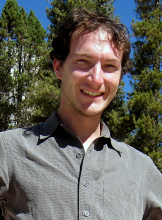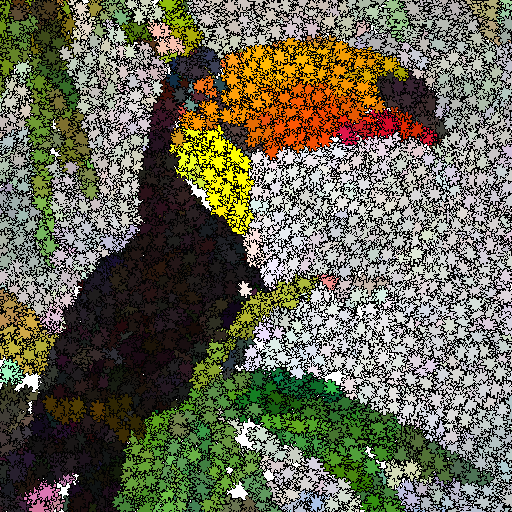Dr Franck Vidal
Honorary Professor

Contact info
Positions: Senior Lecturer, Acting Director of Research
Postal address: School of Computer Science & Electronic Engineering
Bangor University
Dean Street
Bangor LL57 1UT
Gwynedd
United Kingdom
e-mail: f.vidal@bangor.ac.uk
telephone: +44 1248 382834
url: http://www.fpvidal.net/
Contact Info
Positions: Senior Lecturer, Acting Director of Research
Postal address: School of Computer Science & Electronic Engineering
Bangor University
Dean Street
Bangor LL57 1UT
Gwynedd
United Kingdom
e-mail: f.vidal@bangor.ac.uk
telephone: +44 1248 382834
url: http://www.fpvidal.net/
Overview
Dr Franck P. Vidal received the PhD degree in Computer Science from the School of Computer Science at Bangor University in January 2008. His PhD dissertation was entitled Simulation of image guided needle puncture: contribution to real-time ultrasound and fluoroscopic rendering, and volume haptic rendering.
From 2006 to 2008, he worked as a research assistant in the School of Computer Science at Bangor University where he collaborated on the implementation and validation of ImaGINe-S (Imaging Guided Interventional Needle Simulation), a VR Simulator for Visceral Needle Puncture funded under the Health Technology Devices (HTD) Programme. ImaGINe-S was awarded 2nd place in the Eurographics 2009 Medical Prize “for its innovative use of computer graphics in a complex system that is already far advanced towards clinical use” (see here for a YouTube video to learn more about the simulator).
In late 2008, he joined the APIS team (Analysis of irregular Processes, Images and Signal, applications to biology and medicine) at INRIA Saclay—Île-de-France (the French national research institute in computer science and automation) and the Laboratory for Integration of Systems and Technology (CEA-LIST) at the French Atomic Energy Commission (CEA) where he was investigating the use of artificial evolution in tomography for nuclear medicine.
In January 2010, Dr Vidal joined the SuperComputing Online Re-planning Environment (SCORE) project at the Department of Radiation Oncology of the University of California, San Diego (UCSD) where he developped Compton scattering computations on GPU.
In mid-February 2011, he joined the AVIZ (analysis and visualization) team at INRIA Saclay—Île-de-France. He was investigating multimodal visualisation of MRI data.
Dr Vidal was awarded a lectureship position at the School of Computer Science at Bangor University in October 2011. His research area is focussing on X-ray imaging and simulation, non-destructive testing by ionising radiation, inverse problems, optimisation and artificial evolution, high performance computing, image analysis and machine learning, image-based simulation. His research is mostly applied to material science, medical imaging and medical physics, and computer science.
Research
My research interests include:
- X-ray imaging and simulation
- non-destructive testing by ionising radiation
- inverse problems
- optimisation and artificial evolution
- high performance computing
- computer vision, image analysis and machine learning
- image-based simulation
- medical imaging and medical physics (inc. X-ray, CT, MRI, PET and radiotherapy)
Some of my current and most recent past projects:
Postgraduate Project Opportunities
X-ray imaging and simulation
non-destructive testing by ionising radiation
inverse problems
optimisation and artificial evolution
high performance computing
computer vision, image analysis and machine learning
image-based simulation
medical imaging and medical physics (inc. X-ray, CT, MRI and PET)
Teaching and Supervision
- 2022->2023: ICE3701 - Machine Learning
- 2022->2023: ICE4702 - Machine Learning
- 2021->today: ICE3111 - Computer Vision
- 2019->today: ICE4131 - High Performance Computing
- 2019->today: ICE1521 - Unix
- 2015->2021: ICP3038 - Computer Vision
- 2012->2019: ICP4129 - Distributed systems (labs)
- 2011->2019: ICP1043 - Information systems
- 2011->2019: ICP4143 - Information systems
- 2011->2015: ICP1030 - Computing fundamentals
Research Activity at Previous HEIs
- 2011, AVIZ Team at INRIA Saclay - Ile-de-France, France: multi-modal visualization of neuroimaging data (inc. T2 MRI, DTI, fMRI, etc.)
- 2010/2011, Department of Radiation Oncology, University of California, San Diego (UCSD), CA, USA: use of high performance computing in radiotherapy re-planning, particularly physically-based simulation of radiation/matter interactions using GPU programming
- 2008/2009, Fondation Digiteo, INRIA Saclay-Ile-de-France and CEA Saclay, France: Tomo3D-EA - Evolutionary algorithms and particle physics modelling in fully-3D tomographic reconstruction for nuclear medicine
- 2006-2008, School of Computer Science, Bangor University, UK: Development and validation of a virtual reality simulator for training in interventional radiological visceral needle puncture procedures
- 2003/2008, School of Computer Science, Bangor University, UK: Development of novel techniques for a virtual reality simulator for training in image-guided needle puncture procedures
- 2002/2003, Laboratory of Nondestructive Testing using Ionizing Radiations (CNDRI), INSA, Lyon, France: Modelling the response of an X-ray camera and developing a new method based on X-ray imaging simulations to investigate or predict artefacts in micro-tomography.
Education / academic qualifications
- 2016 - Other , Postgraduate Certificate in Higher Education , Bangor University (2011 - 2016)
- 2008 - PhD , PhD in Computer Science (2003 - 2008)
- 2003 - Other , Diplôme d'études approfondies Images et Systèmes (2002 - 2003)
- 2002 - MSc , Master of Science in Computer-Aided Graphical Technology Applications (2001 - 2002)
- 2001 - Other , Diplôme d'Univérsite Ingienérie de l'Image (2000 - 2011)
- 2000 - Other , Diplôme Universitaire de Technologie, spécialité génie logiciel (1998 - 2000)
Research outputs (58)
- Published
Creating Functional Digital Shadows of X-ray systems
Research output: Contribution to conference › Abstract › peer-review
- Published
New developments in gVirtualXray since IBSim 2021
Research output: Contribution to conference › Abstract › peer-review
- Published
RAMPVIS: Answering the Challenges of Building Visualization Capabilities for Large-scale Emergency Responses
Research output: Chapter in Book/Report/Conference proceeding › Conference contribution › peer-review
Prof. activities and awards (19)
INSA-Lyon
Activity: Visiting an external institution › Visiting an external academic institution
Characterization of fatigue cracks in metallic materials by X-ray tomography
Activity: Examination
Optimisation and Simulation of X-ray images: Automatic registration of surface models on synchrotron microtomography data
Activity: Talk or presentation › Oral presentation
Accolades (7)
Best Poster Presentation
Prize: Prize (including medals and awards)
Terry Hewitt Prize for the Best Technical ResearchStudent Paper
Prize: Prize (including medals and awards)
News Bunny
Prize: Prize (including medals and awards)
Projects (3)
Training Simulator for Transperineal Ultrasound Guided Biopsy
Project: Research
Fly4PET
Project: Research





